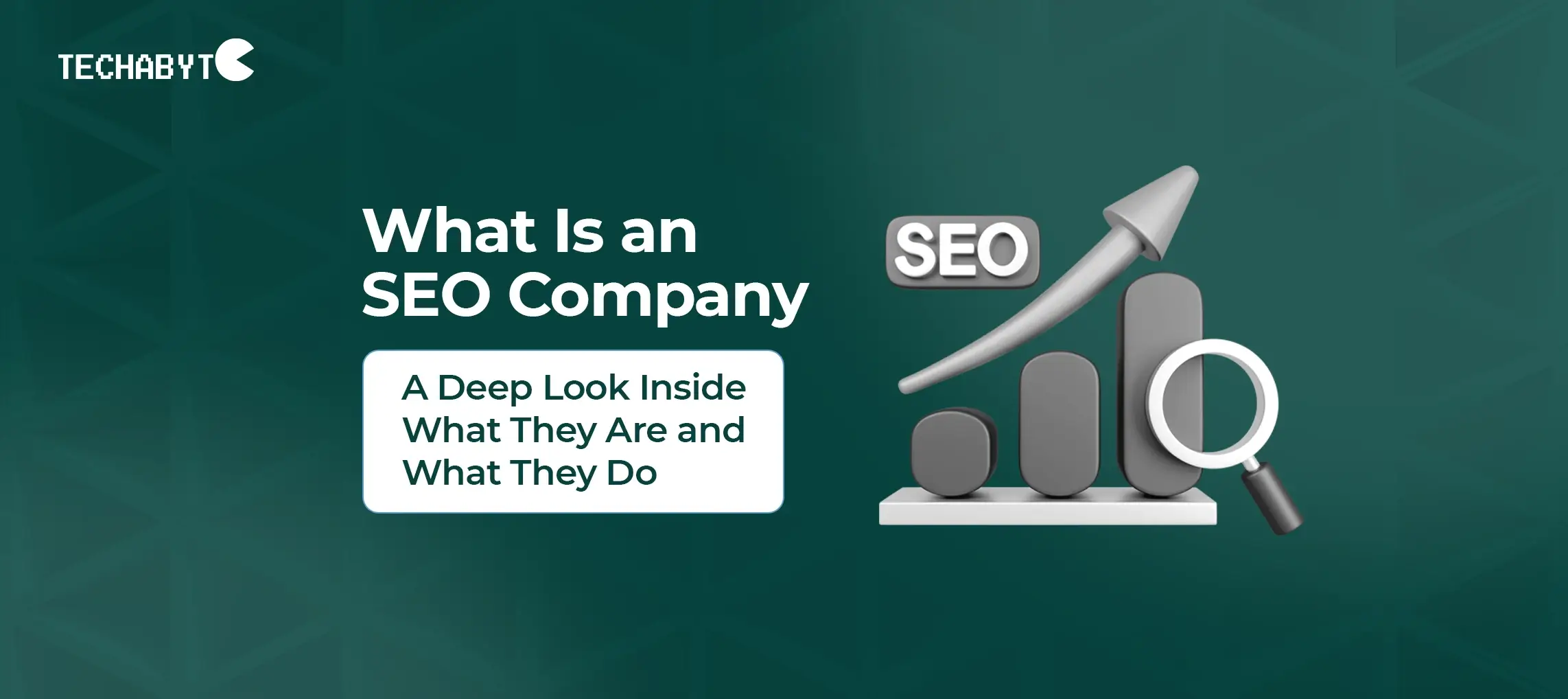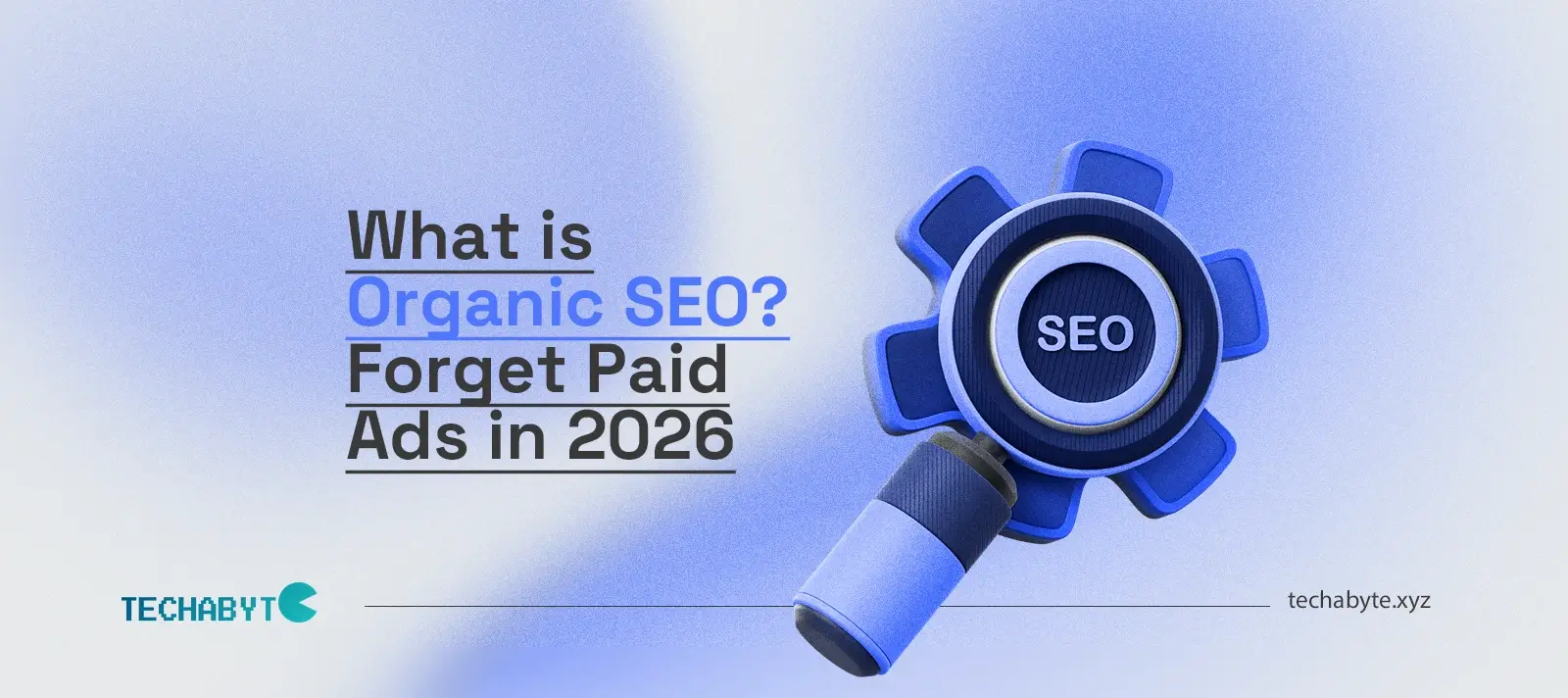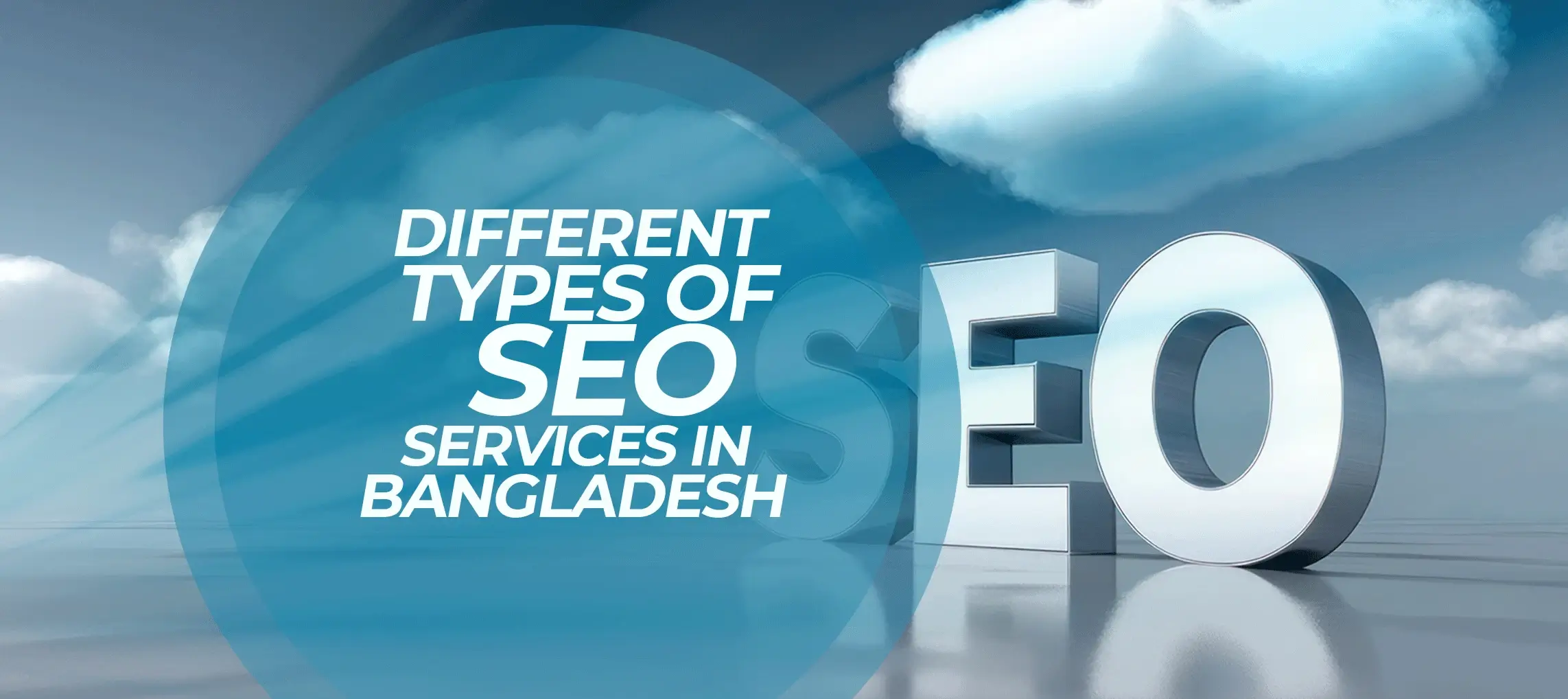This blog sums up an important topic which is “What Is an SEO Company?” By reviewing the basic function in lifting the online profiles of U.S. firms amidst a $119.9B SEO industry come 2025. From breaking down main offerings such as keyword analysis and nearby fine-tuning to steering charges costing $1,000–$5,000 each month for small businesses, it brings out moral plans, ROI chance up to 748%, and hints for picking in a field where natural search leads 53% of site visits. Made for the U.S. market, this piece arms business owners with info for steady digital growth.
Key Takeaways
- Market Dominance: The U.S. SEO industry is valued at $119.9 billion in 2025, with organic strategies fueling 53% of site traffic and delivering 748% average ROI.
- Service Spectrum: SEO companies manage everything from technical audits to content creation, with local SEO converting 80% of “near me” searches into customers.
- Ethical Imperative: White-hat practices ensure longevity, avoiding penalties in a year of AI-driven updates where 91% of SEO efforts boost performance.
- Selection Strategy: Prioritize agencies with transparent reporting and proven U.S. case studies; steer clear of #1 ranking guarantees amid 94% organic click preference.
- Scalable Growth: From local shops to national brands, SEO evolves with businesses, outpacing social media traffic by 1,000%+ for enduring U.S. market authority.
Introduction
The answer to SEO Company is, technically, a specialized firm that uses various search engine optimization methodologies to rank a website well at the top of preferred search engines such as Google. They become your strategic partner learning algorithms, user behaviors, and market trends to organically place your business higher in the search rankings. Unlike consultants who may do some bits and pieces here and there, they go beyond continuously updating expertise as the digital landscape changes; catching more of those 16.4 billion daily global searches—most emanating from America itself. For US firms, casual queries are transformed into loyal customers minus regular paid ads.
SEO has grown in the U.S. to be a $119.9 billion market by 2025, and by 2032, it will have reached $380.2 billion at a compound annual growth rate of 17.9%. Organic search drives more than half-53%-of website traffic, vastly outpacing paid channels and beating organic social media by over 1,000%. In a country with about 330 million internet users where Google controls some 90% of all searching among businesses using SEO, performance improves by 91%, especially when mobile devices account for approximately organic traffic in the U.S. This growing investment highlights how important SEO is as a weapon in the fierce digital competition.
What Is an SEO Company?
An SEO Company is a firm whose core business is improving the ranks of websites and content on search engine results pages, primarily Google-there are more than 90% U.S. searches through this channel. In fact, their real purpose goes much beyond mere ranking- aligning digital assets with user intent to drive qualified traffic that converts into sales and leads. Since 94% of organic results attract clicks compared to just 6% through paid advertising in the United States, these firms bring businesses closer to connections amid 683.3 million hourly searches by working with sustainable, data-backed tactics for long-term online authority.
SEO firms focus on the mastery of organic search- performing deep dives into algorithms and SERP features. Full-service digital agencies use efforts across PPC, social, email, and more. This gives room for specialization that allows SEO firms to go even deeper with tools such as Ahrefs for backlink analysis-often bringing in faster specialized results. These SEO agencies, however, work with much broader firms for integrated campaigns so as not to fall victim to resource dilution which generalists are prone to in the $119.4 billion U.S. internet marketing sector.
The heart beats of an SEO firm raising visibility to catch organic traffic, which makes up 53% of US site visits and brings in compounding income without ad spend. They use plans like content clusters and technical upgrades to move up rankings, where top spots get 70% of clicks. For US firms, this means income rises, with SEO bringing in 1,000%+ more traffic than social paths.
What Does an SEO Company Actually Do?
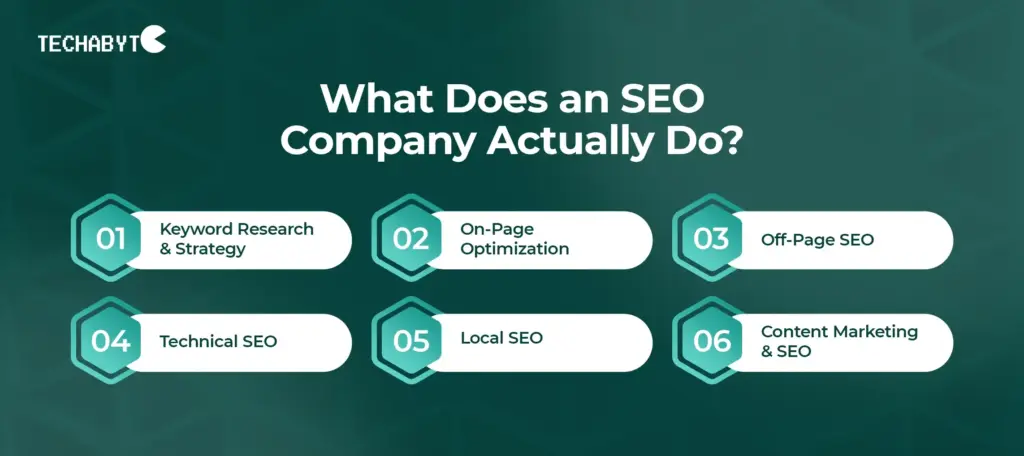
Keyword Research & Strategy
SEO teams use tools like SEMrush to break down queries, labeling them as informational (“best coffee near me”) or transactional (“buy running shoes online”). With 1.5 billion ‘near me’ searches a month in the U.S., they focus on high-intent terms that match the 63% mobile-driven traffic. This makes sure content finds users in their moment, lifting both relevance and conversions.
Agencies identify gaps — for example, long-tail keywords that account for 69% of traffic sources and are drastically underserved — by reverse-engineering competitors’ rankings via Ahrefs. For a U.S. retailer, this might expose “sustainable apparel brands USA” as a low-competition goldmine to be exploited in targeted content.
The strategies weigh search volume against difficulty scores and prefer terms with strong conversion rates. In competitive U.S. e-commerce, a keyword having 10,000 monthly searches but 20% conversion beats the high-volume saturated one to maximize the 748% ROI potential.
On-Page Optimization
Titles are adjusted (under 60 characters), together with meta description and headers by way of keyword addition. Internal links build silos. This makes for easier crawlability. Sites in the U.S. have seen a 22.4% increase in top results’ click through rate due to optimization. Authority can be distributed by restructuring a blog hub, an example that uplifts dwell time.
The E-E-A-T framework by Google demands proof of credibility. Expert bylines, citations, and HTTPS are added to signal trust by SEO pros. In 2025 with 91% of SEO positively impacting goals this is how misinformation in U.S. searches is fought.
Breadcrumb trails, super fast-loading pages, all go under the Core Web Vitals umbrella. They push a 37% average bounce rate signal straight to the algorithm that this is indeed a good site. In mobile-heavy U.S. traffic, this can lift engagement by 30%.
Off-Page SEO
Firms earn backlinks through HARO outreach and PR, plus convert unlinked mentions into links. In the U.S., quality links from .edu or .gov domains amplify domain authority significantly.
White-hat centers on real value (guest posts), while black-hat means paid farms—causing a risk of getting de-indexed. Sustaining growth is through ethical approaches in Google’s penalty pathway environment.
There are about 58-60% zero-click searches, off-page creates long-term authority; manual actions can junk the whole ride for organic traffic which is 53% reliant.
Technical SEO
Audits via Screaming Frog fix 404s and ensure XML sitemaps, while optimizing for CWV (e.g., LCP under 2.5s). Mobile tweaks cater to 63% U.S. organic mobile traffic.
Resolved issues like duplicate content allow better indexing, directly influencing the 39.8% CTR for position one in 2025. A U.S. site audit can recover lost traffic within weeks.
Implementing FAQ or Product schema yields rich snippets, increasing CTR by 30% in competitive U.S. SERPs.
Local SEO
Agencies verify and enrich GBP with 360° photos, Q&A, and updates, targeting the 95% of U.S. mobile searches on Google.
Syncing NAP across 50+ directories and soliciting 83% Google review usage builds trust. Inconsistencies drop rankings in local packs.
With 1.5 billion monthly “near me” queries and 88% leading to same-day actions, geo-targeted content dominates U.S. local results, converting 80% of searches.
Content Marketing & SEO
Using GSC data, they plan around peaks like U.S. holidays, ensuring 40% purchase influence from relevant searches.
Pillar-cluster models build hubs, with AI aiding 50% of U.S. marketing firms in optimization.
Keyword-rich, intent-matched copy guides users to CTAs, enhancing the 13% average SEO CTR.
Analytics, Reporting & ROI Tracking
Beyond rankings, they track 748% ROI and 37% bounce reductions for holistic U.S. insights.
Dashboards visualize trends, fostering trust in long-term campaigns.
GA4 monitors U.S. traffic sources, GSC reveals queries, and Ahrefs benchmarks competitors.
The SEO Process: How an SEO Company Works Step-by-Step
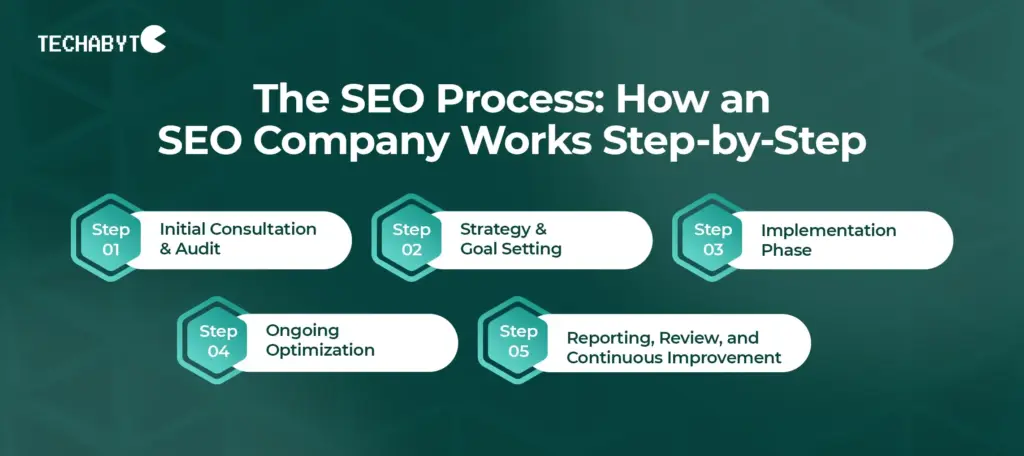
The journey with an SEO company involves a planned, ongoing process that aims to achieve noticeable improvement in organic exposure and income. Unlike random changes, this careful method makes sure every step fits your business aims, adjusting to the changing U.S. search scene where organic hits account for 53% of site visits. Learning these steps clears up What Is an SEO Company? and shows how they turn facts into control, often bringing a good return on investment within 6-12 months.
Step 1: Initial Consultation & Audit
It starts with a deep discovery phase where the SEO team runs intensive stakeholder interviews with your business leaders that will help them understand your business objectives, what target market you are trying to reach, and your current digital footprint. This is followed by a site audit using tools like Screaming Frog and Google Search Console for technical issues such as broken links, duplicate content, or slow load times which plague 40% of sites in the U.S. Since mobile traffic makes up 63% of organic searches in the American market, this audit also compares you to local competitors who have quick wins.
Step 2: Strategy & Goal Setting
The agency works together with the client to develop a customized plan post-audit, creating SMART objectives such as increasing organic traffic by 30% within six months or maintaining a top-three position for five high-value keywords. This stage includes resource allocation based on which tactics promise the highest ROI—by focusing on low-competition, high-conversion terms in the $72.31 billion U.S. SEO market—and distributing resources between on-page, off-page, and technical efforts. SEMrush and other similar tools ensure that forecasts are made with buy-in from all marketing channels. For example, a mid-sized e-commerce company can forecast seasonal surges and plan to achieve a 748% ROI eventually by combining short-term fixes with long-term authority building.
Step 3: Implementation Phase
This is where execution happens on phased sprints beginning with technical optimizations of high impact such as improvements to Core Web Vitals-as these will tie in directly with Google’s standards-thereby influencing 39.8% on top position CTRs. Thereafter content creation and link building white-hat outreach to secure quality backlinks from US-relevant sites while further on-page refinements enhance E-E-A-T signals. This often takes an initial collaboration period of between 3-6 months with weekly check-ins to be able to further refine based on early data coming in; for example, a B2B SaaS company may realize a 20% uplift in traffic just from optimized landing pages alone which capitalizes on the 69% of traffic that comes from long tail queries.
Step 4: Ongoing Optimization
SEO is not a set-it-and-forget-it strategy; this phase requires ongoing monitoring and adjustments with analytics from GA4 based on performance metrics such as bounce rates (average 37%) and conversions. As search trends change—most searches are zero-click between 58-60 percent—the agency shifts, perhaps updating content or tweaking for mobile-first indexing, which is the main source of U.S. traffic. Practically, that may involve A/B testing meta descriptions or scaling link profiles to keep growth continuous; for a national brand, it might mean adjusting to voice search trends because now they account for 20% of all mobile queries in the U.S.
Step 5: Reporting, Review, and Continuous Improvement
Transparency shines through detailed monthly reports that visualize traffic growth, keyword rankings and ROI via customized dashboards (and often in Ahrefs), another KPI. Quarterly reviews measure progress against the plan while incorporating feedback to adjust tactics in a changing environment where 91% of SEO work has found it beneficial to the business- reinforcing agility. For example, if seasonal declines are identified after a quarterly review by a U.S. local service provider who then readjusts their approach, it compounds returns because organic channels deliver 1,000% more traffic than social.
Why Businesses in the U.S. Need an SEO Company
In the U.S. digital economy, internet users run into billions of searches every day, which makes working with an SEO firm not just a matter of choice but an urgent prescription for survival and scaling up. They understand the subtleties of Google’s 89.74% share of the market in which algorithm expertise can be translated into competitive advantages on a sustainable growth path. Firms that do not undertake SEO miss out on much in such a market.
High competition in American digital markets
E-commerce in the United States is worth $1.1 trillion as of 2025, and 46% of all Google searches are local. Without niche SEO, small businesses have to compete against big players like Amazon who take up 70% of clicks from the top SERP-while even mid-sized competition uses highly sophisticated strategies to own a niche. An SEO company levels the playing field with competitor gap analyses that put a Chicago-based retailer above national chains in ‘local fashion deals’ searches resulting in 40% more qualified leads.
Long-term ROI compared to PPC
The cost of PPC can be likened to a faucet that runs. As long as it is on, water comes out; turn it off and the flow stops. Averagely, there is $1-2 per click being spent even at break-even spot; while on the other hand, search engine optimization pays you back over a long period. SEO campaigns get into ROI-positive territory within 6-12 months and reach full velocity at ROI peaks between 2-3 years with up to 748% gains possible. Organic results garner 94% of clicks in the U.S., seemingly free post-investment traffic leaves PPC’s burn rate in the dust by a factor of two to five over time. For SaaS startups, this means evergreen content equates to lifetime customer value long after pay-per-click’s ephemeral visibility.
SEO’s role in brand trust and authority
Top rankings do not just bring in traffic; they denote credibility because 40% of U.S. consumer purchases are influenced by perceived expertise through E-E-A-T. In trust-sensitive sectors like finance or healthcare, SEO builds authority with quality backlinks and content loyalty because 85% of users prefer organic results, not ads. A New York law firm saw its client inquiries jump 35% after getting onto page one due to the fact that users equate high placement with reliability.
Local vs. national SEO challenges in the U.S.
Local SEO addresses geo-specific challenges-from managing 1.5 billion “near me” searches that convert at 88% to ensure NAP consistency and review management amid city density-national efforts require scalable content for broad audiences. State regulations and competition pose an added challenge across various states. The agency’s answer to this is starting local for immediate wins, such as a Miami restaurant popping up by 50%, and then going national for longer-game dominance in perhaps the most fragmented market on Earth.
Types of SEO Companies
Specialization means greater knowledge since not all SEO agencies are created equally in the $72.31 billion U.S. market, where focused strategies enable a 30-50% lift in ROI because of AI tools. Choosing the right type, from hyper-local focus up to an enterprise-wide overhaul, will depend on your scale and goals.
Local SEO agencies
They are experts in geo-targeted optimization- mastering Google Business Profile and Citations to tap that 76% local search traffic which leads to an in-store visit. Highly recommended for small businesses fighting competition in cities like Los Angeles, managing reviews and ‘near me’ strategies typically bring 80% conversions from mobile queries. For example, a Texas auto shop client could see its foot traffic double within months just by having consistent NAP across more than 50 directories.
E-commerce SEO specialists
With a focus on online stores, these agencies work product pages, schema markup, and long-tail queries fighting the $1.1 trillion U.S. e-commerce boom with 1,183% retail ROI. They fight cart abandonment with conversion-centered content; for a Denver apparel brand increased sales by 45% through enhanced search snippets.
Enterprise SEO firms
Managing large inventories of 10,000+ pages, these powerhouses handle technical complexities such as site migrations for Fortune 500 clients that scale in high-stakes national campaigns. With tools available for cross-domain authority, they keep up compliance and speed-necessary as 63% of traffic is mobile. A multinational like a Seattle tech giant would be able to recover from updates, regaining 25% lost traffic through enterprise audits.
SaaS and niche-specific SEO agencies
Customize for verticals like Software or Healthcare whom they want to decode industry intent—e.g., B2B queries yielding 994% ROI in education—using specialized keyword clusters. For a Boston fintech, this means HIPAA-compliant optimizations that boost lead gen by 60% in regulated searches.
Full-service marketing agencies that include SEO
They blend SEO with PPC and social for a holistic U.S. approach perfect for brands wanting one single line of ROI visibility. They deliver strong depth of versatility, though not the deepest pure SEO play, excelling in an omnichannel setup, as seen with a Florida tourism board mixing local SEO plus email to hit 35% engagement uplifts.
SEO Company Ethics — White-Hat vs. Black-Hat Practices
Ethics define longevity in SEO, where manipulative tactics invite ruin amid Google’s stringent 2025 updates. White-hat approaches build genuine value, aligning with the 91% of efforts enhancing performance, while black-hat shortcuts erode trust in the trust-driven U.S. market.
Understanding ethical vs manipulative tactics
White-hat methods are about users first valuable content and natural link-earning building E-E-A-T for sustained rankings. Black-hat meanwhile might throw in some keywords or pay a farm to throw dubious links at you. It chases short-term high at the cost of believability (and when 87% of marketers say AI accuracy matters to ethics). Try an ethical campaign for a U.S. health brand with guides penned by experts. Compare that effort to black-hat’s automated spam that’ll trick the system for one sad, hollow moment.
Google penalties and algorithm updates
The June 2025 core update and August spam rollout targeted low-quality content, demoting sites by up to 50% and enforcing global relevance. Penalties like manual actions can wipe 53% of organic traffic, with recovery taking months; ethical firms preempt this through compliant audits.
How to identify if an agency uses unethical SEO
Red flags include promises of instant rankings or opaque methods, ignoring the 6-12 month ROI timeline. Probe for case studies and tool access; if they dodge transparency or push link buys, walk away—86% of pros now use AI ethically for verifiable results.
Why transparent SEO builds long-term brand success
Ethical practices cultivate authority, yielding 748% ROI without penalty fears, as users favor organic results 94% of the time. For a sustainable U.S. e-tailer, this means enduring top spots and customer loyalty, outlasting manipulative peers hit by updates.
Tools, Technology & AI Used by Modern SEO Companies
Modern SEO thrives on tech stacks that automate and predict, with 86% of U.S. professionals integrating AI for 49.2% ranking improvements. These innovations streamline workflows in the fast-evolving $72.31 billion market.
Top SEO tools (Ahrefs, SEMrush, SurferSEO, Screaming Frog, Google tools)
Ahrefs, SEMrush, SurferSEO, Screaming Frog, and Google’s tools have taken places at the top of the essentials list for making it big in digital. Ahrefs delivers the best long-tail keyword possibilities-approximately 69% of its insights dwell on untapped search potential. SEMrush is great for advanced trend forecasting specific to the U.S. plus competitive analysis. SurferSEO nails precision on-page optimization; Screaming Frog offers solid technical and site health audits. Add free but sturdy traffic and performance insights from Google Analytics 4 and Search Console to the above mix. That’s how brands can build authority while enhancing visibility with netting organic growth that can be actually measured.
How AI, automation, and data analytics improve SEO performance
AI automates 87% of content ideation, slashing costs 4.7x versus human efforts, while analytics predict user intent for 30-50% ROI boosts. Automation handles routine tasks like sitemap updates, freeing pros for strategy; in U.S. e-commerce, this means real-time personalization driving 20% conversion hikes.
Machine learning in keyword clustering, content optimization, and forecasting
Machine learning now sits at the very heart of keyword clustering, content optimization, and search forecasting. It does grouping of related keywords into topic clusters automatically, refines content for voice searches comprising about 20% U.S. searches, and forecasts impacts from big algorithm changes such as the June 2025 core shift. With this much information at hand, companies can use predictive modeling to forecast seasonal trends and pre-emptively adjust tactics. This often results in actual organic traffic growth that is quite substantial.
How to Choose the Right SEO Company
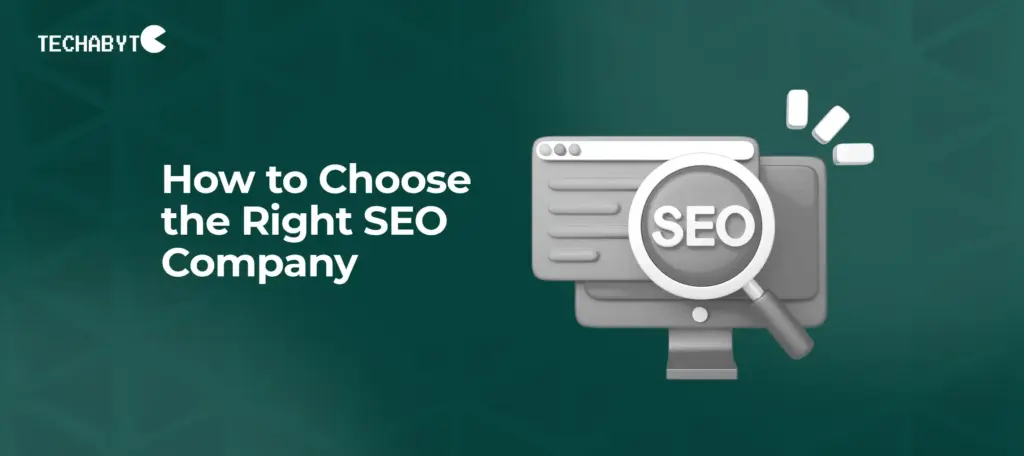
Selecting an SEO partner is pivotal in the U.S., where mismatched agencies waste 20-30% of budgets on ineffective tactics. Look beyond hype to proven alignments with your goals in this $72.31 billion arena.
Key factors: experience, proven results, transparency, communication
Prioritize firms who have spent five or more years in the U.S. markets and were able to present case studies at 748% ROI metrics with methodologies disclosed. Communication performance delivered in weekly updates available for review builds trust; transparency in tool access is accountability—just what most pros want as accurate AI, too. A vetted agency can demo GA4 dashboards!
Red flags to avoid (guaranteed #1 rankings, no reporting, black-hat promises)
Steer clear of #1 guarantees, ignoring realistic 6-12 month timelines, or vague reporting that hides underperformance. Black-hat hints like bulk links signal risks from August 2025 spam penalties. Spot these early to protect your site’s integrity.
Checklist for evaluating agencies
Assess portfolios for U.S.-relevant wins, verify certifications, and request references; ensure they use top tools like Ahrefs. Budget alignment and contract flexibility round out the list—aim for those promising measurable KPIs over fluff.
Questions to ask before hiring
Inquire: “How do you handle 2025 updates?” or “What’s your E-E-A-T strategy?” to gauge expertise. Probe ROI projections and exit clauses for peace of mind in long-term partnerships.
SEO Company vs. In-House SEO: Which Is Better?
Deciding between outsourcing and in-house hinges on resources, with agencies offering instant scale in the competitive U.S. landscape. Each has merits, but hybrids often optimize for 91% performance gains.
Pros and cons of outsourcing vs. hiring in-house
When you outsource your SEO, you get expert hands and advanced AI tools (the industry uses them 86% of the time), plus scalable solutions that grow with your business. It saves money and is great for firms wanting fast results without extra inside work. The bad side? Less direct control and not as quick to talk things over as with an inside setup.
This provides stronger brand understanding, faster coordination, and better long-term goal alignment. But again, it comes with the high expense that most in-house SEO specialists within the U.S. are remunerated with an annual salary of above $80K, not to mention the software and training fees that they have to cater for. For most businesses, a hybrid model-in-house strategy plus agency execution strikes the right balance having the ability to go as high as 91% more performance overall.
Cost, scalability, expertise, and control comparison
Agencies cost $1,500-$5,000 monthly for small firms, scaling seamlessly, versus in-house’s fixed $100K+ annual outlay. They provide cutting-edge expertise for complex U.S. challenges, trading some control for efficiency—perfect for enterprises eyeing 748% ROI.
When hybrid SEO models make sense
Blends shine for mid-sized businesses balancing budgets, with in-house handling daily tasks and agencies tackling audits/updates. This leverages 87% AI content efficiency while retaining oversight.
How Much Does an SEO Company Cost?
Costs vary widely in the U.S. market, but investing wisely unlocks organic goldmines. Expect $1,500-$5,000 monthly for most SMBs, with ROI justifying every dollar.
Average pricing breakdown (small business vs. enterprise)
Small U.S. businesses pay $1,500-$3,000 for local packages, covering audits and content; enterprises shell out $20,000+ for full-scale tech overhauls. A Houston diner might budget $2,000 for GBP dominance, while a Silicon Valley corp invests $25,000 for global reach.
Factors that affect cost: services, competition, goals
High-competition niches like finance add 20-50% premiums; comprehensive add-ons like AI content inflate bills, as do ambitious goals like national expansion. Location matters—coastal agencies charge more for talent pools.
ROI-based pricing vs. low-cost traps
Opt for performance-tied models tracking 748% returns over $500/month gimmicks that deliver subpar results. True value compounds, avoiding black-hat pitfalls.
Budget planning tips for sustainable SEO investment
Allocate 5-10% of revenue, starting small and scaling with data; track 53% traffic baselines for adjustments. Quarterly reviews ensure alignment.
How SEO Companies Handle Algorithm Updates & Risk Management
With Google’s 2025 updates like the June core and August spam rollouts shaking SERPs, agencies act as buffers, minimizing drops through proactive defense.
How agencies prepare for Google core updates
They monitor via SEMrush alerts, diversifying tactics pre-rollout—e.g., bolstering E-E-A-T before June’s relevance push. 86% integrate AI for forecasts, simulating impacts on U.S. traffic.
Recovery strategies if rankings drop
Post-update audits dissect losses, refreshing content and disavowing toxic links to rebound within weeks, as seen in September drops. Focus shifts to zero-click optimizations for 58-60% resilient traffic.
Importance of agility and data-driven decision-making
Real-time GA4 insights enable pivots, ensuring 91% positive outcomes amid volatility. This data agility turns risks into opportunities for U.S. brands.
Contract, Legal, and Transparency Factors
Solid contracts safeguard investments in the $72.31 billion U.S. SEO space, outlining expectations to avert disputes.
What to expect in SEO contracts (deliverables, terms, ownership of content/links)
Detail deliverables like monthly KPIs, timelines (6-12 months to ROI), and IP rights for created assets. Terms cover termination and NDAs, ensuring U.S. compliance.
SLAs and performance clauses
Include uptime guarantees and ROI milestones, like 20% traffic growth, with penalties for misses. This ties pay to results.
Why written transparency prevents disputes
Clear clauses on reporting and changes mitigate 30% of partnership frictions, building trust for long-term wins.
Common Myths About SEO Companies
Myths mislead in the U.S. SEO arena; debunking them clarifies paths to 748% ROI.
SEO is a one-time project
It’s perpetual, requiring tweaks for updates to sustain 53% traffic. One-offs fade quickly.
Results happen overnight
Real gains take 6-12 months, peaking later. Patience yields compounding.
All SEO agencies use the same tactics
Specialization varies; niche pros outperform generalists.
Cheap SEO = good SEO
Bargains often mean black-hat risks; invest for ethical 91% success.
FAQ
How do SEO companies actually improve Google rankings?
Companies implement their strategies in a holistic manner to improve Google rankings by abiding by the newest algorithm factors in 2025, thereby factoring in E-E-A-T, searcher engagement, mobile-friendliness, or page speed. Companies perform deep keyword research and find those low-difficulty high-intent keywords that would be profitable for them if targeted since keywords with a high cost per click indicate profitability. All content produced matches user queries and optimizations include meta titles, headers, content structure, and technical audits for crawlability fixes plus adding schema markup to enable rich snippets which increases CTR by up to 30%.
What results should I expect from an SEO company in the first 3 months?
The first ninety days will bear foundation rather than a dramatic overhaul since SEO is waiting on its Rank Transition Algorithm to take up to 90 days for changes to be fully indexed. A leading agency would provide an aggressive site audit outlining quick wins that could be achieved through technical fixes—improving Core Web Vitals and dropping bounce rates by between 10-20%., plus better on-page elements such as meta tags for a ‘head start’ in keyword ranking. Established US sites may see between 10-30% organic traffic growth from easy pickings like local SEO tweaks but new sites will lag behind. Positive ROI starts showing within six to twelve months, with 91% of campaigns already showing gains by then—track it due to transparent reporting.
What questions should I ask before hiring an SEO company?
Arm yourself with these targeted questions to gauge their expertise and fit for your U.S.-based goals before committing to an SEO company. Important ones being: 1) “How much experience do you have within my industry, and do you have any case studies to prove this?” so niche knowledge; 2) “How do you conduct keyword research and competitor analysis?” to such strategic depth; 3) “How do you handle technical SEO like Core Web Vitals and Mobile optimization with 63% of our traffic coming from mobile?” 4) “What kind of link building do you practice and is it white-hat?” lest we may be penalized.
How long does it take for an SEO company to show real results?
The real SEO results depend on the age of the site, its competition, and strategies used. In the U.S., most businesses start noticing improvements and growth in about 20-50% increase in traffic within 6-12 months, attaining the peak of ROI between year two to three years. New sites get a shot at taking more than twelve months due to the time it takes building up domain authority.This is not what applies to established sites since they can see ranking shifts within 30-90 days brought about by quick technical optimization. Quality content is a factor to consider especially with an update such as the June 2025 core update; therefore it extends timelines in competitive niches. However, consistent efforts yield compounding benefits where about 91% of all SEO initiatives have a positive impact within a single year.
Do SEO companies guarantee #1 ranking on Google?
Because it’s expressly against Google guidelines to make a guarantee, and also due to volatility in algorithms plus competition, NO legitimate SEO firm can GUARANTEE a #1 ranking on Google. The companies that do this are practicing black-hat techniques which will work temporarily until your site is penalized then drops off the face of the Earth (of course you’ll be under contract with them long enough for them to collect). Hence, strategies from ethical agencies yield an average ROI of 748% over time — not overnight. If anyone tries to pitch you a guarantee, walk away. Real professionals will give realistic timelines based on data-driven progress.
How do SEO agencies report their work and track ROI?
SEO agencies deliver customized dashboards on a monthly reporting basis. SEO KPIs often include organic traffic (20-30% growth), keyword rankings, conversions, bounce reductions (below 37%), and ROI (revenue from organic leads divided by costs). All are to be tracked in GA4, with user behavior consolidated. Impressions tracked in the Search Console. Competitor benchmarking from Ahrefs/SEMrush makes for transparency $119.9 billion in the U.S. market, not just rankings but trends visualized and reported quarterly so adjustments can be made post-update—91% of pros want these to build client trust and get a 748% return long-term.
What are the signs that I need to switch my SEO company?
Several red flags indicate when it’s time to switch: lack of continued progress for 6 months, such as traffic that remains stale despite investments; no exceptional communication, such as updates that come rarely or questions that are dodged; reliance on outdated tactics that would seem to be in order to invite penalties from the 2025 updates; opaque reporting where one does not have access to the May 2020 later version GA4 tools; or guaranteed quick fixes within an unrealistic 3–6 month timeline. If it’s organic, then it’s in the U.S., where 53% traffic is organic; otherwise, it is also bad scapegoating (blaming algorithms endlessly) and shady backlinks from low-quality sites. Keywords related to the previous rankings should also be panicked for and if there is no recovery plan, evaluate instantly; do not let this erode your potential 748% ROI.
Are SEO companies still relevant in the age of AI search engines?
Yes, SEO companies are more important in 2025 because AI search is evolving and not replacing the core fundamentals of the field, as many might be led to believe; it further emphasizes the need for high-quality E-E-A-T-rich content that AI Overviews cite. This is illustrated by the fact that 65% of businesses have better results when using an AI-integrated approach to their SEO efforts. And while there is a whopping 58-60% zero-click searches, optimized sites still capture 94% of clicks in conversational results. Professionals just shift tactics to user intent and multimodality.
How can I verify an SEO company’s past performance or case studies?
Ask for detailed anonymized case studies with verifiable metrics (show the before-and-after traffic data to prove 700% organic growth) and testimonials. Check with Ahrefs whether backlink work checks out or try SimilarWeb for approximate traffic validation. Speak directly to references; do not take filtered feedback at face value. Ask for success stories on third-party sites like Clutch or Google reviews (for the U.S.). Firms making generic claims are mostly running a scam; in fact, ask for specific first-person accounts from niches such as SaaS or e-commerce —strategy sharing that maps to trends like AI optimization would make their 748% ROI claim stand up.
What are the long-term benefits of working with a professional SEO company?
Professional SEO is what delivers sustained organic traffic growth (up to 1,000% more than any social channel), without the need for ad spend. This builds the brand’s authority—40% of purchases in the U.S. are influenced via top rankings—while delivering a massive 748% ROI over years through compounding assets such as evergreen content plus strong link profiles that reduce dependence on PPC and ensure E-E-A-T for AI-era resilience. Professional agencies save time with expert tools in the $119.9 billion U.S. market, foster scalability from local to national, and create equity in your site that drives customer retention and revenue stability for 2-5x return versus short-term tactics.
Conclusion
In simple terms, an SEO company is a professional ally who assists any business entity to thrive online by boosting its ranking in search engines. The right SEO partner can significantly impact the $72.31B U.S. industry in 2025. With the help of ethical tactics, AI-driven updates, and continual optimization, firms offering such services can create a pathway for enterprises to transform from local contenders into national champions. The process of finding the best SEO company involves showing your requirements, testing their method, and verifying that they emphasize an enduring development plan. When appropriately conducted, SEO does not only attract visitors but rather alters the path of your organization; enhances your brand; gives you an upper hand.

